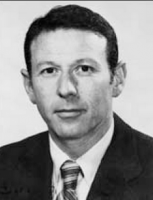










Paul Berg, (born June 30, 1926, New York, N.Y., U.S.), American biochemist whose development of recombinant-DNA techniques won him a share (with Walter Gilbert and Frederick Sanger) of the Nobel Prize for Chemistry in 1980.
After graduating from Pennsylvania State College (later renamed Pennsylvania State University) in 1948 and taking a doctorate from Western Reserve University in 1952, Berg pursued further studies at the Institute of Cytophysiology in Copenhagen and at Washington University in St. Louis, where he remained as assistant professor of microbiology until 1959. From 1959 he was associated with the medical school of Stanford University, serving as chairman of the biochemistry department in 1969–74 and becoming Willson professor (1970) and director of the Beckman Center for Molecular and Genetic Medicine (1985).
In the course of studying the actions of isolated genes, Berg developed methods for splitting DNA molecules at selected sites and attaching segments of the molecule to the DNA of a virus or plasmid, which could then enter bacterial or animal cells. The foreign DNA was incorporated into the host and caused the synthesis of proteins that were not ordinarily found there. One of the earliest practical results of recombinant technology was the development of a strain of bacteria containing the gene for producing the mammalian hormone insulin.
Nobel Prize in Chemistry (1980)
AAAS Award for Scientific Freedom and Responsibility (1982)
National Medal of Science (1983)